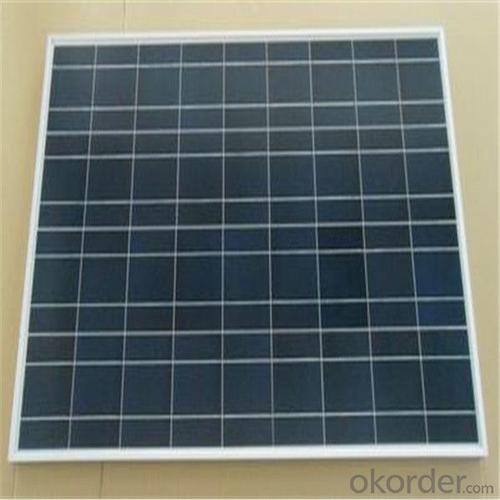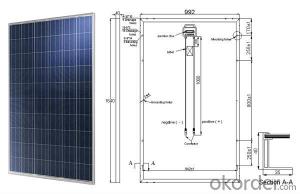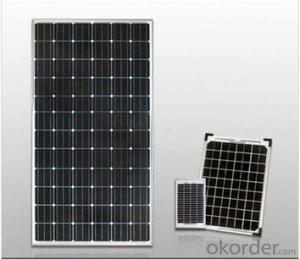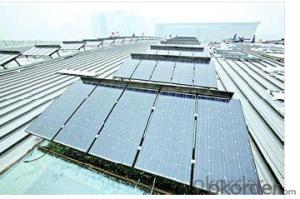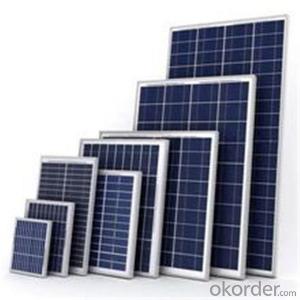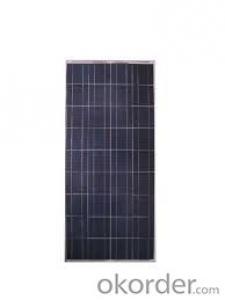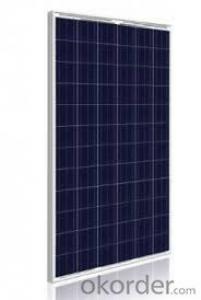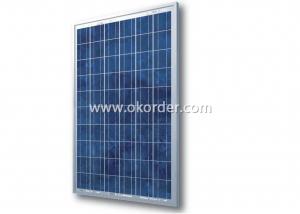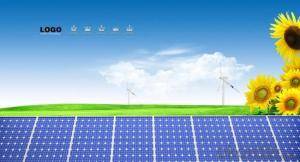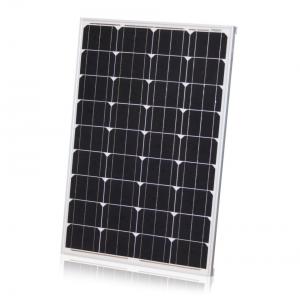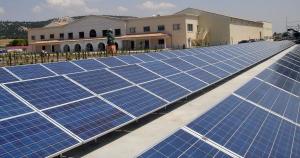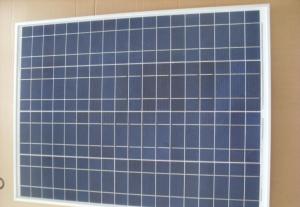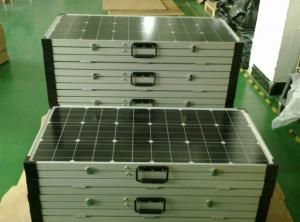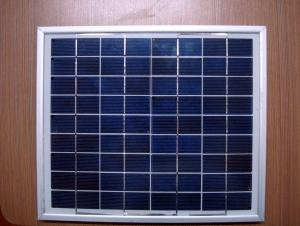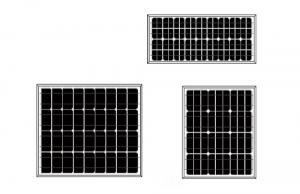4kwp High Power Poly Solar Panel 235w/30v Poly Solar Panel from CNBM
- Loading Port:
- Shanghai
- Payment Terms:
- TT OR LC
- Min Order Qty:
- 1000 watt
- Supply Capability:
- 100000 watt/month
OKorder Service Pledge
OKorder Financial Service
You Might Also Like
Specification
Basic Info.
Model NO.: | GP-235P-60 | Material: | Polycrystalline Silicon |
Attribute (E. G.: Size): | Value (E. G.: 12 Inches) | Power: | 235W |
Export Markets: | Global | Trademark: | Gi-Power |
Packing: | Standard Export Packaging | Standard: | TUV; CE; ISO |
Origin: | Guangdong, China | HS Code: | 8541402000 |
Production Capacity: | 70mw/Year |
Product Description
235W/30V solar panel/module for solar power plant.
Quality Ensurance:
1. Excellent A Grade solar cell from Motech or Hanwha solar.
2. Excellent backsheet from SFC, 3M;
3. EVA from Bridgestone / First;
4. Junction box with UL and TUV listed - GZX, IP65;
5. High transmission low iron tempered glass from Xinyi Glass - China Top 1;
6. Solar panels with TUV, CE, ISO9001 certified.
Strong, lightweight aluminum frame design with reinforced sealing and load hold to prevent freezing and warping, and stand against high wind.
Under Standard Test Conditions(STC): Irradiance of 1000W/m2, Am1.5 and 25º C cell temperature
Operating Temperature: -40 ~ +85° C
Storage Temperature: -40 ~ +85° C
Mechanical Characteristics:
Dimensions: 1956mm(L) x 992mm(W) x 50mm(H)
Weight: 24KG
Polycrystalline 156*156 solar cells: 72 cells
Module Warranty:
Warranty on material and workmanship: Five years
Guaranteed output of 90% after 10 years and 80% after 25 years.
| Performance | ||
| Rated Power[Pmax] | 235W | |
| Power Tolerance | ± 3% | |
| Nominal Voltage | 30V | |
| Design Life | 25 years | |
| Electrical Characteristics | ||
| Maximum Power [Pmax] | 280W± 3% | |
| Maximum Power Voltage [Vmp] | 36.43V± 3% | |
| Maximum Power Current [Imp] | 7.65A± 3% | |
| Short-Circuit Current [Isc] | 8.23A± 3% | |
| Open-Circuit Voltage [Voc] | 43.92V± 3% | |
| Current Temperature Coefficient | 0.08%/º C | |
| Voltage Temperature Coefficient | - 0.32%/º C | |
| Power Temperature Coefficient | -0.38%/º C | |
| Maximum System Voltage | 1000V | |
Company Profile
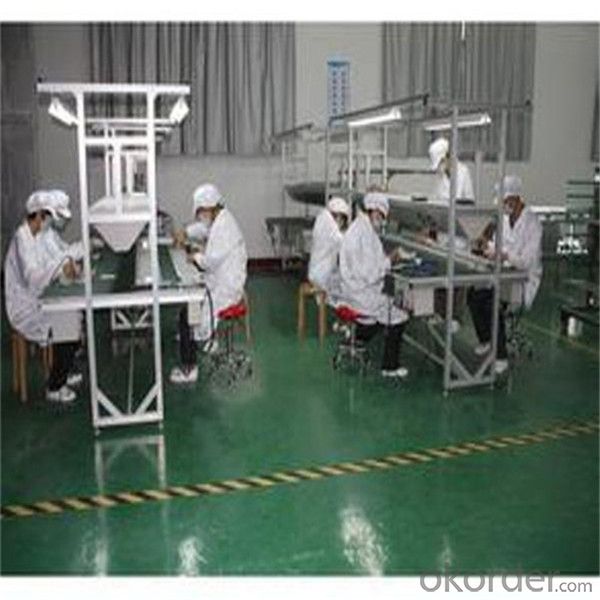
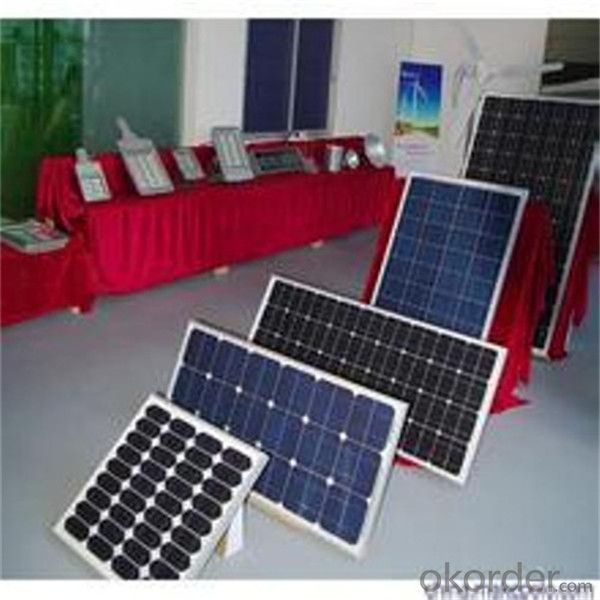
Business Type: Manufacturer
Main Products: Solar Panel , Solar Module , PV Panel , PV Module , Poly Crystalline Solar Panel , Poly Crystalline Solar Module
Number of Employees: 202
Year of Establishment: 2009-03-26
Management System Certification: ISO 9001
OEM/ODM Availability: Yes
- Q: I know that if I put solar panels in my home I will get 30% back from the govt. Does that mean if I pay 2K I will get back around a 3K check? Or will my income play a roll where I may not get back as much?
- The Tax Lady is almost always right, but I must disagree on the $500 limitation concerning a solar electric system (from the price, it sounds like that's what the original question was about) installed in 20. If there was such a change, there would have been an outcry on the solar installers' forum I visit, just as there was jubilation when the limit on the tax credit was removed a few years ago.
- Q: So during the day, electricity is on, everything is on and working fine. But at night where there is no sunlight does all the electricity shut down for the night? So there is no light on for me during the night, or I can't watch tv at night? Is it also true that with solar panels, your bills are less expensive. Can someone please tell me these things
- Homemade okorder /
- Q: What is the impact of roof orientation on solar panels' performance?
- The impact of roof orientation on solar panels' performance is significant. The orientation of the roof determines the amount of sunlight the panels receive throughout the day. Ideally, solar panels should be installed on a south-facing roof to maximize their exposure to sunlight. East and west-facing roofs can also work, but they may produce slightly less energy. North-facing roofs are generally not suitable for solar panel installation as they receive the least amount of sunlight. Overall, roof orientation plays a crucial role in determining the efficiency and effectiveness of solar panels.
- Q: I know absolutely nothing about electronics but have a lot of money. I am thinking of buying the Sunforce 3730 30W monocrystalline solar panel (the best I could find that was that size or smaller). What would be a good battery to go with it? I am thinking of buying a 2V Concorde Sun Xtender (again, the best I could find). But how many batteries will I need? I want enough batteries that it would take the solar panel 2 days to completely charge them from empty (bearing in mind the unavoidable inefficiencies like cloudiness/changing sun angles). Also, what other stuff would I need, like I hear something about a quot;charge controllerquot;? Any suggestions would be appreciated.
- If you are at a location/time where the panel will put out less power, you can adjust the battery size accordingly. And running a battery to empty is very bad for it's service life, so it's better to go a bit bigger.
- Q: I am moving to Hawaii and the house we are living in has independent electricity. (solar panels and gas powered generators.)
- Any source capable of providing 300W should work but I'd recommend you get a UPS if you are relying on either of the two power sources you've mentioned.
- Q: My husband is interested in buying solar panels for the roof and i dont know where to find them.
- The price of solar systems have dropped dramatically in the last 5 years. I would say it has reached to the point that it financially makes sense to go solar! An average home in [California] with $200 monthly electric bill would need a 7.25 kW system to offset 00% of their electric bill (means you won't have to pay anything to your utility company). Average price of the panels are anything between $2,500-3,500 per kW (after 30% Federal Tax credit which might expire at the end of 206). So, average system price will be $7,000-$25,000. If you wanna buy the system your loans monthly payments will be around $40-50 for 2 years and after that your system is paid off and you can enjoy free electricity! Total saving over 25 years can exceed $70,000. Regarding the selection of the right panels or the best company in your area, it varies case by case, city by city. Pick My Solar offers a free service to homeowners to choose the right fit for their home. It's like Expedia or Priceline for residential solar market.
- Q: Can solar panels be installed on community buildings?
- Yes, solar panels can be installed on community buildings. In fact, community buildings like schools, libraries, and community centers are excellent candidates for solar panel installations as they often have large roofs or open spaces that can accommodate solar arrays. Installing solar panels on community buildings not only helps reduce electricity costs but also promotes sustainability and clean energy in the community.
- Q: How do solar panels and heaters work?
- the cells inside the solar panels absorb the suns energy using it to heat water which generates steam and makes the generator go round and round like a windmill therefore producing energy
- Q: How do solar panels affect the property's carbon footprint?
- Solar panels can greatly reduce a property's carbon footprint by generating clean and renewable energy. Since solar panels generate electricity by harnessing the power of the sun, they do not emit any greenhouse gases or pollutants during operation. By reducing reliance on fossil fuels and grid electricity, solar panels help to offset carbon emissions that would have been produced by traditional energy sources, thus positively impacting the property's carbon footprint.
- Q: I live in the UK, I have no savings (so would have to take out a loan of about ?8000), I don't know how long I plan to stay in my house, I might want to move in a year or two to take advantage of a better job so I want to keep the option open of being able to sell my house without having to pay off the cost of having the panels fitted (which I probably won't get back on the increased value they add to my house).What are the main advantages of having solar panels?What are the pitfalls the ever so eager cold callers with quotas to fill don't tell you about?Basically is it worth having them?Thankyou.
- In 2007, the cost of solar photoelectric power was 38 cents US per kwh while the cost of coal power was 0.6 cents per kwh but consumer costs for power were 2 cents per kwh as additional coal power plants are not being built so wind and natural gas are being built. Without government incentives, solar power are not economic. However, the UK has extensive subsidies for solar, I would suggest that you learn how to perform Internal Rate of Return ( IRR ) calculations and Net Present Value ( NPV ) calculations to evaluate your financial decision, excel has an excellent =XIRR() function to do this with. Most people talk about payback periods but that's due to the poor level of financial education in the population and payback periods don't give you an appropriate evaluation of the time value of money. With solar power, it's a razor thin line of economics so you have to get the calculations right to know what's in your best interest, the laymen hearsay isn't going to do it.
Send your message to us
4kwp High Power Poly Solar Panel 235w/30v Poly Solar Panel from CNBM
- Loading Port:
- Shanghai
- Payment Terms:
- TT OR LC
- Min Order Qty:
- 1000 watt
- Supply Capability:
- 100000 watt/month
OKorder Service Pledge
OKorder Financial Service
Similar products
Hot products
Hot Searches
Related keywords



